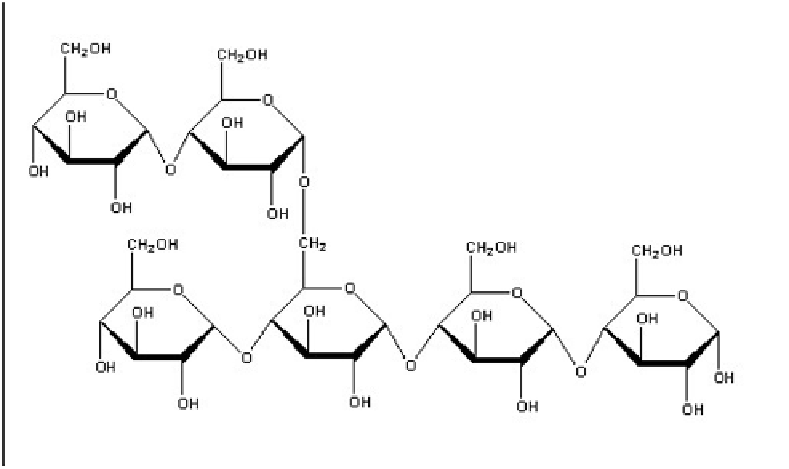Environmental Engineering Reference
In-Depth Information
Figure 4. Chemical structure of starch (segment).
3.1.3. Oil based materials
Oil based materials are made of triglycerides which typically consist of glycerin and
saturated and unsaturated fatty acids (the chain length ranges between C
8
and C
20
). The
sources of oils and fats are a variety of vegetable and animal raw materials. Soybean, palm,
rapeseed and sunflower oil are the most important in the terms of world wide production
(Demibras, 2003; Hill, 2006; Sheehan et al., 2000). Vegetable oils are nowadays used for
production of biodiesel by reacting with an alcohol, usually methanol. However, they can also
be used as a substrate for chemical reactions thanks to two chemically reactive sites: the
double bond in the unsaturated fatty acid chain and the acid group of the fatty acid chain
(Biermann et al., 2001). Like sugar and starch crops, oilseed crops are characterized by low
yield, high use of agrochemical inputs and competition with food market. In the future, non-
edible crops like
Jatropha curcas
and
Pongamia pinnata
, which require lower inputs and are
suited to marginal lands, may become the most widespread oil crops, especially in dry and
semiarid regions (Achten et al., 2007; Rajagopal and Zimermann, 2007). Other sources of oil
provision are the food industry, where waste edible oil is mainly generated from commercial
services and food processing plants such as restaurants, fast food chains and households (Tsai
et al., 2007), and the micro-algae, microscopic single cell aquatic plants with the potential to
produce large quantities of lipids. The latter seems to have promising advantages over
conventional oil crops because of the possibility to be grown in arid and semi-arid regions
with poor soil quality, with a per hectare yield estimated to be many times greater than that of
even tropical oilseeds. Moreover, algae can also grow in saline or polluted water, which has
few competing uses in agriculture, forestry and industry (Chisti, 2007; Sheehan et al., 1998).
A chemical structure of a saturated triglyceride is illustrated in Figure 5.





